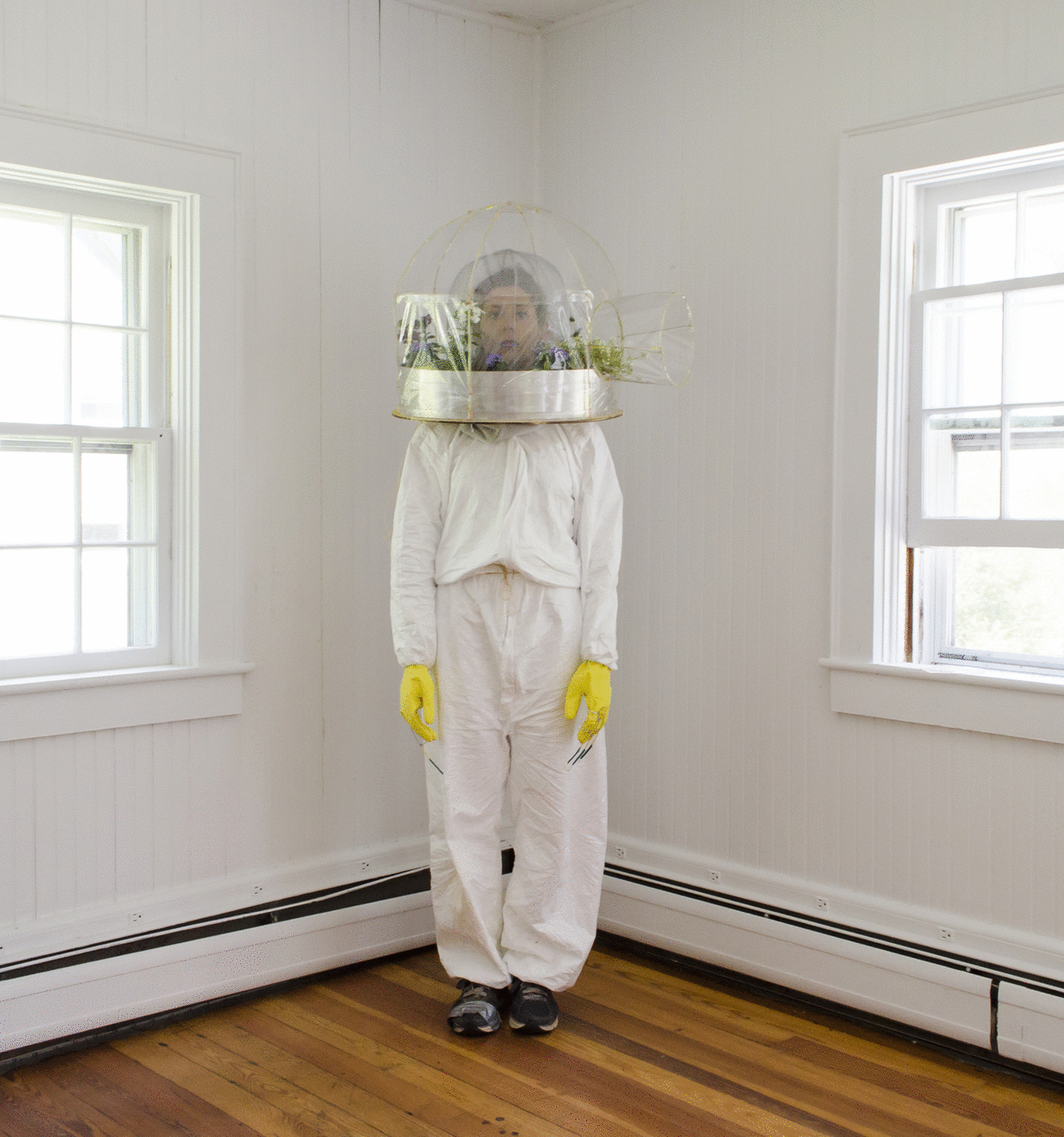 (Apis/Homo)
(Apis/Homo)
Connection/Collaboration 1:
An Interview about interspecies experiences with Dana Michele Hemes
by Olivia Ann Carye Hallstein
Dana Michele Hemes collaborates with humans, insects, microbiomes and bees (to name just a few) in her interspecies experiences. Converging the artistic with the scientific, her work is all about accentuating already existing (but often unnoticeable) interactions in the world around us. Often her work involves highly perceptive technologies that create incredible interactions and sensory spaces. Dana speaks about the importance of connectedness with the environment and between people, her collaborative mindset (with all sizes and beings) and the limits of perception in this interview.
It's so great to speak with you, Dana! Let’s jump right in. Your work often involves interactive sculptures to encourage interspecies communication. Where did your inspiration for this work come from?
I’m interested in the entanglements or connections in the world around us, so I set up scenarios to explore this connectedness. One way I do this is by creating interactive spaces where humans and nonhumans can share a sensory experience. I’m curious as to what we can learn by being present and aware of our shared, intersecting existences… For me, exploring these interspecies relationships is a way to better understand my place in the world.
I think a lot about the limits of our perception of our environments.
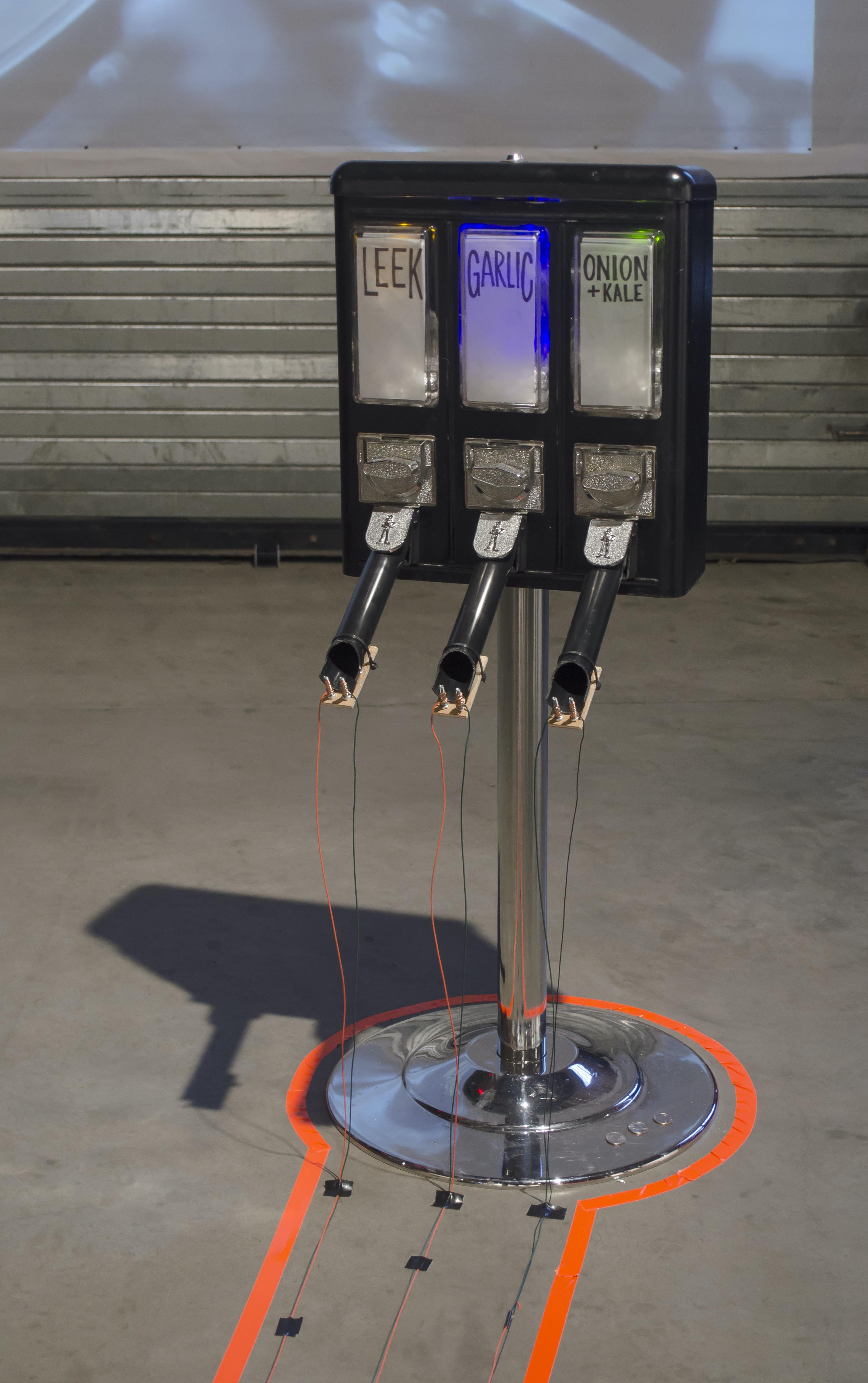 (Homo/Homo 2 Phase 2)
(Homo/Homo 2 Phase 2)
That’s beautiful! You seem to highlight these small, often unseen interactions. How do you decide what to magnify?
When designing interactive spaces, I try to organize them in ways where both species (human and nonhuman) can affect and be affected. In doing so, I think a lot about the limits of our perception of our environments. I start by researching the nonhuman species to learn about how they sense the world; and oftentimes, I build the workaround senses that we share. For example, Ariadna/Homo 1 (which is about corolla spiders) and Pogonomyrmex/Homo 8 (harvester ants) are installations that explore methods of hearing. Humans, corolla spiders, and harvester ants detect and respond to sound in their environments.
Sometimes the sensory stimuli are imperceptible to humans-- like sounds that are too small or high-pitched for our ears, or light beyond the visible spectrum. In these cases, I use tools to amplify or adapt the stimuli so we are better able to perceive and engage with one another. I also find magnification and shifting scales useful when working with small or microscopic creatures, as a way to bring the human and nonhuman together.
Exploring these interspecies relationships is a way to better understand my own place in the world.
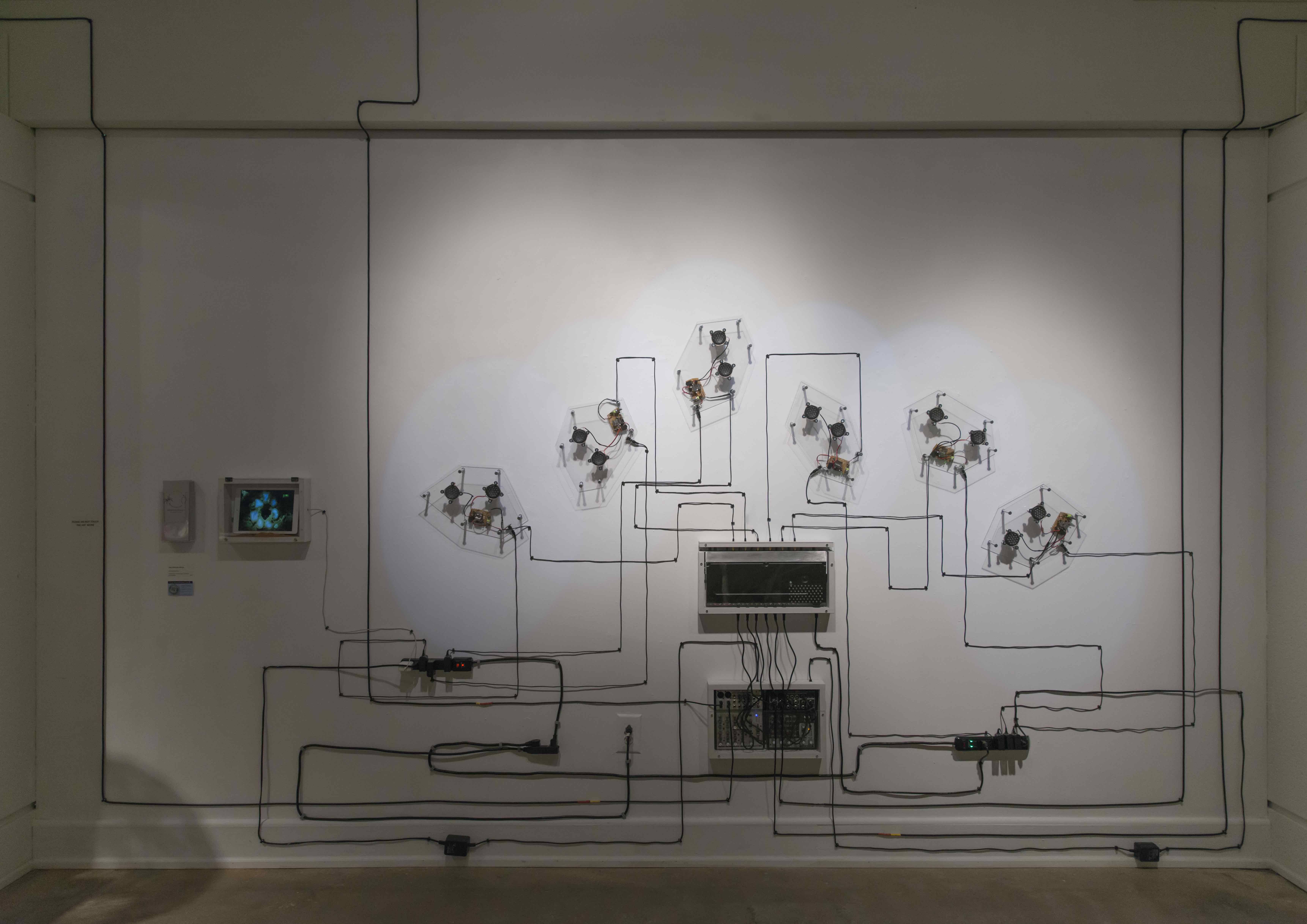 (Ariadna/Homo 1)
(Ariadna/Homo 1)
By magnifying aspects of foraging behavior or listening strategies, you seem to be helping insects, microbiomes, spiders etc., express their voices. What are the results of these conversations?
That’s a great question-- and one of the drivers behind the work itself. I’m particularly interested in what emerges as these interspecies conversations take place… and it varies. I don’t have a specific message that I want people to take away from the work; instead, I’m aiming to invite people to try a new or different way of seeing or listening or feeling or being.
I don’t have a specific message that I want people to take away from the work; instead, I’m aiming to invite people to try a new or different way of seeing or listening or feeling or being.
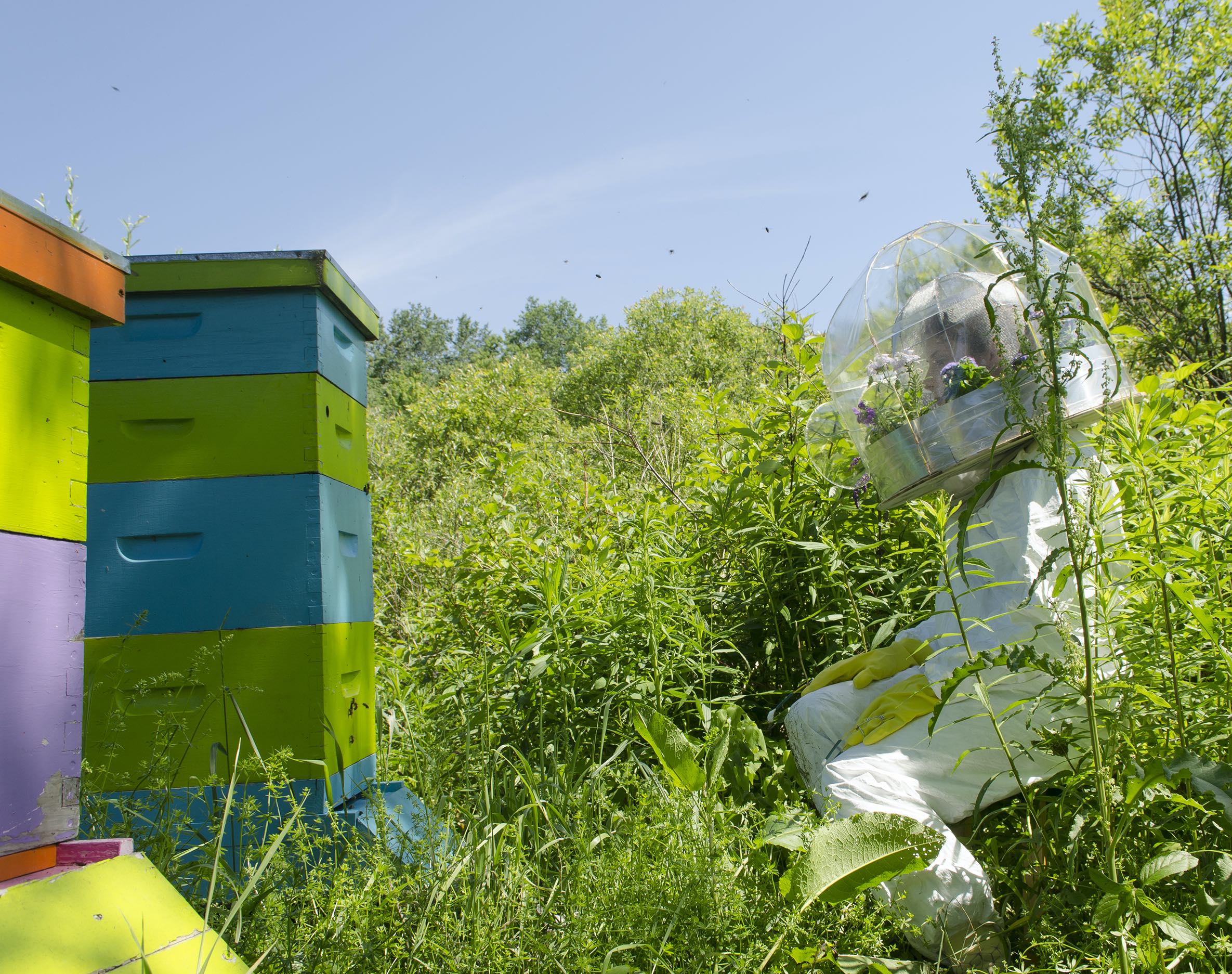 (Apis/Homo 1)
(Apis/Homo 1)
For example, Apis/Homo 1 is a simple, wearable device that creates an opportunity for humans and bees to share an intimate space. Bees can enter and exit the headpiece freely, but the partially closed helmet contains and concentrates the buzzing sounds and flower smells, etc. Here I’m not aiming to make a statement about bees; instead, I’m building a scenario that encourages bee/human conversation and focused observation. The result or takeaway of that shared experience is left for the bees and humans to explore if they want.
I hope that people take away a greater sense of connectedness to the world, and/or a willingness or interest in trying to think beyond themselves or the human. Perhaps it’s a new lens to have in your back pocket that invites a broadened perspective, empathy, or flexibility of the self.
It seems like your work process is also part of the exploration. Do you consider your subjects interspecies collaborators or actors in your vision?
I think it’s important to note that the subject of the work is the whole experience-- the interaction that takes place between humans, nonhumans, and the constructed space. The ants, bacteria, humans, tech, corn, birds, sunlight, air, etc. are all components that shape the interaction. For example, Homo[+]/Homo 2, Phase 2 is a work that connects humans to their bacterial microbiomes through vegetable fiber candies. It was first shown at a one-night event in an indoor gallery at Pioneer Works. I used the feedback on candy flavors to tweak recipes and addressed questions by reorganizing the components of the work. Homo[+]/Homo 2, Phase 3 is the updated version, which was then activated at an outdoor festival at the Wassaic Project.
With this in mind, I consider all of the active participant's collaborators-- living and nonliving. But this collaborative connectedness doesn’t only occur in my built environments; it happens all the time. I’m using art as a method to illuminate these connections and to facilitate broader perspectives beyond the human.
I consider all of the active participant's collaborators… this collaborative connectedness doesn’t only occur in my built environments; it happens all the time.
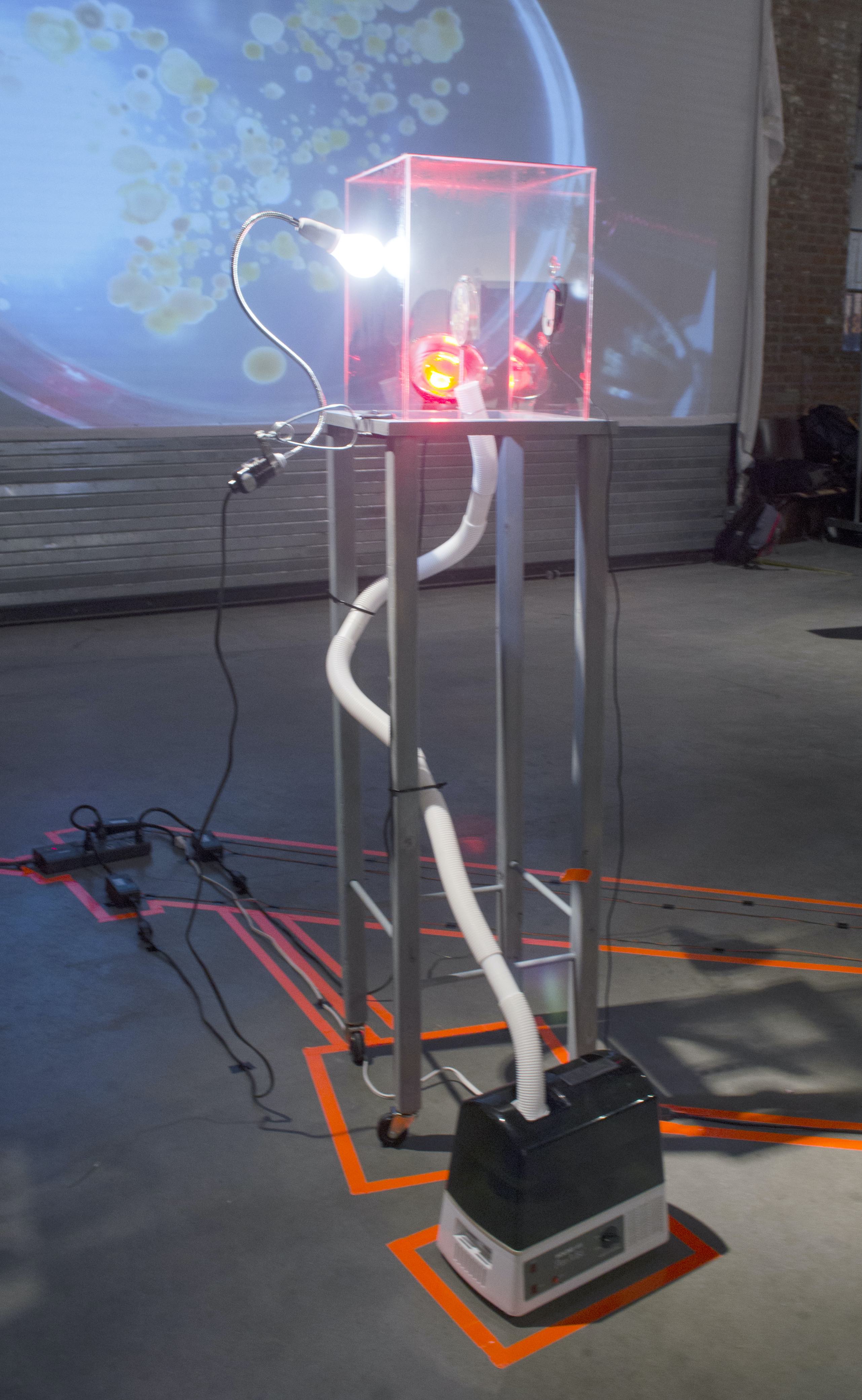 (Homo/Homo 2 Phase 2)
(Homo/Homo 2 Phase 2)
It all seems very scientific and you name your works in the Latin or in traditional scientific classifications. What role do the traditions of science play in your work?
My work is interdisciplinary-- integrating science, philosophy, and art into the making and thinking. So science is an essential part of my practice. I love that curiosity is baked into its core, and that scientists ask big questions and have specific methods and tools for searching for answers. I’m also fascinated by taxonomy or the systems we use to order and categorize information-- particularly the limitations of these systems, like when we discover something that doesn’t quite fit into any of our categories. Scientific classification changes, which highlights the fluid nature of our knowledge about the world. Originally, Linnaeus’ taxonomy only had 2 kingdoms-- plants and animals. For a while, there were 8 kingdoms, which were later reduced to 6, and as of 2015 there are 7… and there is still plenty of room for debate around outliers-- like viruses.
For something that seems so neat and orderly, it’s actually a messy, malleable, slippery and sometimes contentious process. I think that’s why I’m drawn to using them in my titles… Plus, naming things feels like a very human thing to do.
Collaboration is an important part of my process-- whether it’s working with scientists, programmers, the public, or other species-- it helps the work grow into something bigger and more interesting.
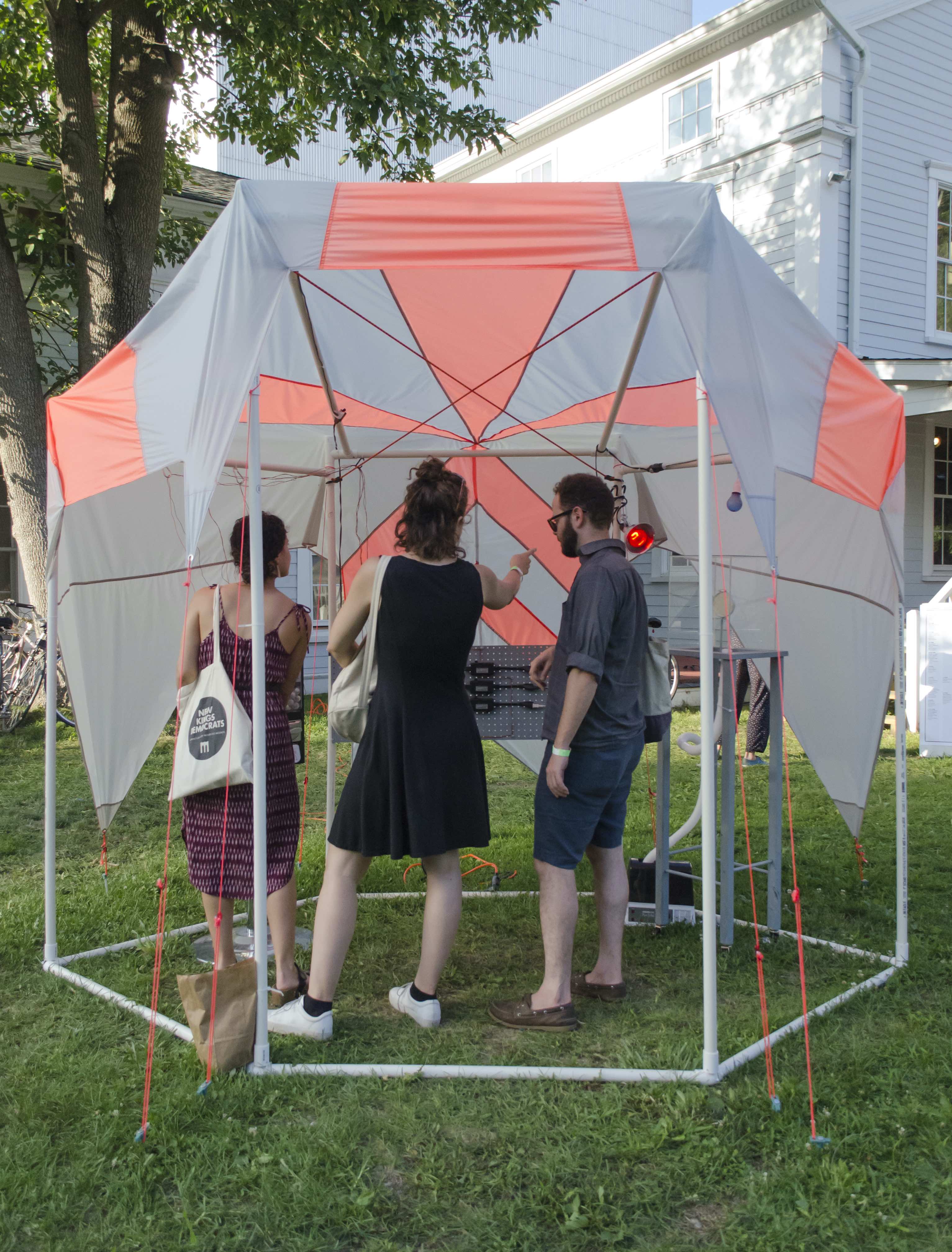 (Homo/Homo 3 Phase 2)
(Homo/Homo 3 Phase 2)
And you often include human technologies to create your works including specialized engineering and sensorial technology. How do you approach scientific and engineering problems as an artist?
I’d say that I approach engineering problems with naive enthusiasm. There is so much I don’t know about computer science and electrical engineering; so, I blindly assume that if I have a specific question or tech need, there must be an answer in a forum in some corner of the internet.
Also, I ask for help from people who know more than me. Collaboration is an important part of my process-- whether it’s working with scientists, programmers, the public, or other species-- it helps the work grow into something bigger and more interesting.
My work is about shifting perspectives and revealing a thing that’s already there…
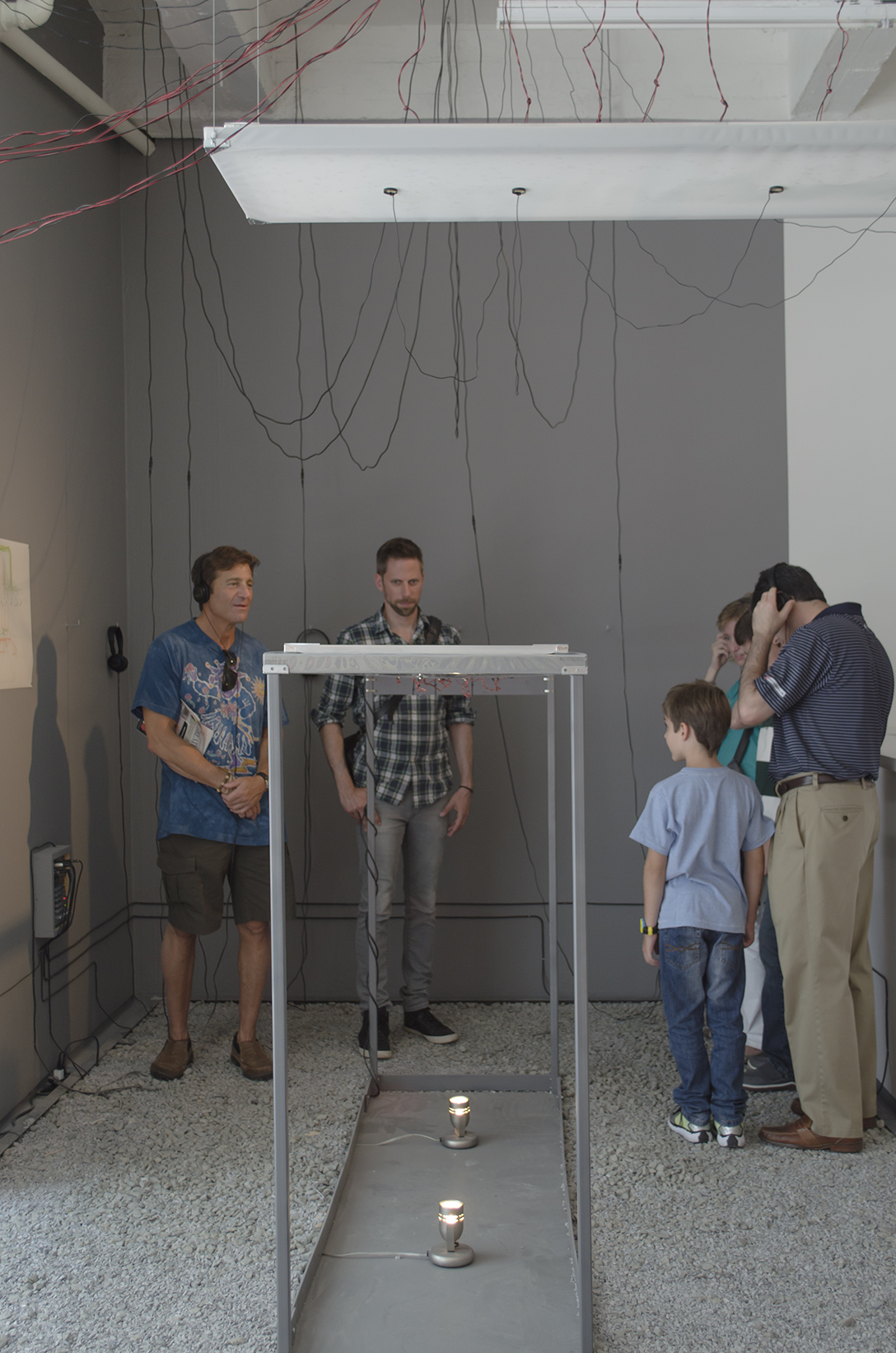 (Pogo/Homo)
(Pogo/Homo)
There was this lovely description in your artist statement, where you write “Each moment is an event: an active, participatory state where all parts of a system affect and are affected”, how can art accentuate or add to this participation? Do you consider your work a form of performance art?
Art is a medium that can set a framework that intentionally requests an open mind. It’s stuff that’s about other stuff. It sets people up for looking deeply and feeling their way through an unknown. My work is about shifting perspectives and revealing a thing that’s already there-- so while people are always active participants in the world, I think it might be easier to engage meaningfully when the environment requests and directs focus.
I consider my work interactive rather than performance, only because I don’t want to risk implying that there’s a distinction between the actor(s) and the audience. I think that the term “interactive” helps to frame the experience as one where you cause change and can be changed... all parts affect and are affected.
And lastly, how have your projects adapted to Covid-19 times given that there is now less possibility for live experiences?
The lack of physical interactions with people has definitely been a challenge. That said, I’ve been able to continue collaborating with artists and scientists through virtual means. I’m currently working on a project that is exploring our connection to the octopus, which is supported by the Ocean Memory Project. The Ocean Memory community is a cross-disciplinary, far-reaching network of people who come from different backgrounds and areas of expertise (and geographic locations). With video-based virtual meeting technologies becoming so commonplace, it has made these long-distance conversations easier. One thing that this pandemic has illustrated is the connectedness of the world; and how these connections shape our lives and behaviors in real and sometimes painful ways.
But things are starting to reopen; and I’m excited to be starting a studio residency at Cornerstone STUDIOS. I optimistically look forward to future gatherings... humans, nonhumans, and all.
danamichelehemes.com